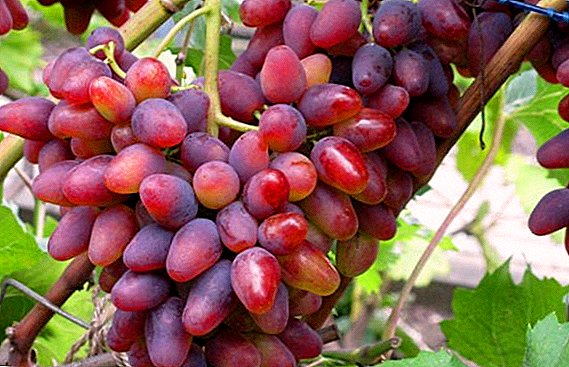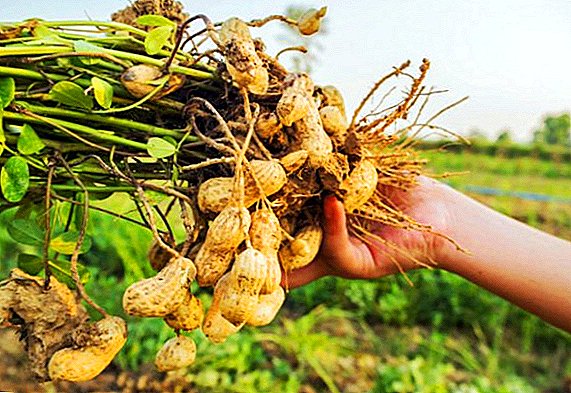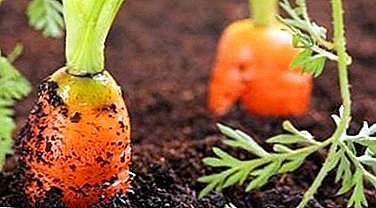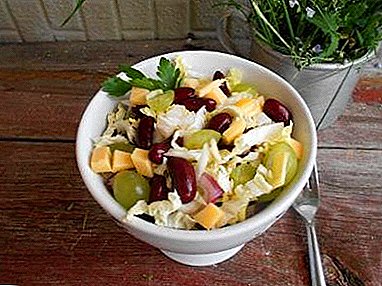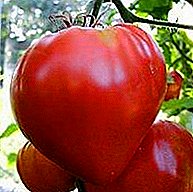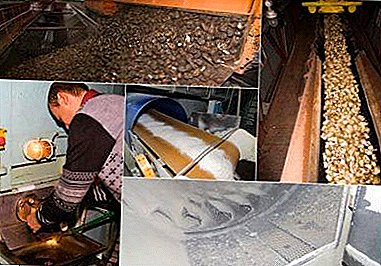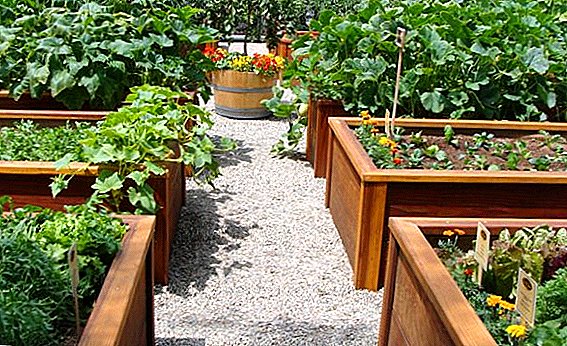 One of the factors influencing the beginning of sowing, as well as the growth and development of planted plants, is the temperature of the open ground. For one season, three or even four steadily high yields of various garden crops from one area can be obtained by warm beds, which can be easily settled with your own hands. At the same time, the fertility of the soil on which they are located is of no fundamental importance, and affordable and inexpensive materials are used for their construction.
One of the factors influencing the beginning of sowing, as well as the growth and development of planted plants, is the temperature of the open ground. For one season, three or even four steadily high yields of various garden crops from one area can be obtained by warm beds, which can be easily settled with your own hands. At the same time, the fertility of the soil on which they are located is of no fundamental importance, and affordable and inexpensive materials are used for their construction.
The essence of the method
The use of a warm garden bed made in the spring for early planting of greenery, radish, cucumbers, tomatoes, pumpkins and other garden crops allows the garden season to begin 2-3 weeks earlier than usual.  The appearance of heat in a specially prepared soil due to the presence of decomposing organic substances that are in an enclosed space. During decomposition, as with any other active chemical process, heat is generated, which is maintained at a constant level for a long time under the condition of limited interaction with the external environment.
The appearance of heat in a specially prepared soil due to the presence of decomposing organic substances that are in an enclosed space. During decomposition, as with any other active chemical process, heat is generated, which is maintained at a constant level for a long time under the condition of limited interaction with the external environment.
The duration of the thermal effect on the ground depends on the amount of the rotting material and its density. It is clear that the greater the volume and density of organic matter, the longer it decomposes and, accordingly, the time for heating the earth directly depends on these two factors.
Did you know? The idea of using natural soil heating originated from observations of dung heaps and compost pits. Even in very snowy and frosty winters, they never became covered with snow, they were vaporized over them, which indicated an increased internal temperature.
Options for warm beds
There are two main types of independently heated beds:
- Temporary. Have the form of rectangular elongated semi-circular hills without additional fencing. Initially used for growing seedlings, and then aligned under the general level of the garden and planted with the main crops.
- Permanent. They are trenches or boxes, which are made of slate, planks, bricks, in rare cases of metal sheets. Designed for the cultivation of major garden crops for 3-5 years.


- In-depth. Trenches of arbitrary length, with or without insulating material, up to 60 cm deep and 1.1 to 1.5 m wide.
- Ground. Puff mounds with a small recess in the ground (up to 10 cm), which have low sides made of stone, brick, wood, 90-110 cm wide and 30 to 50 cm high in the form of a hill in the shape of a semicircle, trapezium, pyramid.
- Fenced (raised). The simplest option is a rectangular box of wooden planks and beams with a height of 40 to 60 cm, a length of 4 to 12 m and a width of 1 m.



Important! A deep trench with a large volume of organic matter for a long time gives off heat well with the support of sufficient moisture.
How to make a bed with your own hands
Acquaintance with the technology of growing garden plants on warm beds of elevated type, which are made with your own hands, it is advisable to start with the step-by-step production of one wooden box. To create it, you need simple tools that are in every house, pre-prepared lumber and a small amount of time. The box will have overall dimensions: width 1 m, length 6 m, height 34 cm.
To create it, you need simple tools that are in every house, pre-prepared lumber and a small amount of time. The box will have overall dimensions: width 1 m, length 6 m, height 34 cm.
Learn how to independently make a vertical bed and a bed-pyramid for strawberries.
Materials and tools
In the manufacture and installation of boxes used such tools:
- roulette;
- carpenter's pencil;
- gon;
- screwdriver or electric screwdriver;
- hammer;
- nails or screws;
- ax;
- hacksaw for wood;
- ground drill or spade.

Materials will serve:
- pine boards, 25 mm thick, 18 cm wide, 6 and 1 m long (4 pieces each);
- bars, section 40x40 mm, length 73 mm (8 pieces) and section 20x40 mm, length 10 cm (4 pieces).
Manufacturing process
A brief description of the work, showing how you can make a warm garden bed for growing greens, lettuce, and cucumbers with planting in early spring, is not a dogma. This example shows that the process is simple, does not require much time and financial costs.
For work, you need a flat horizontal platform for free placement and movement of objects of great length. So:
- A board with a length of 1 m is cut off (the ends should be marked with a rectangle before cutting).
- The second board is applied to the first one with one face end, both fastened with self-tapping screws (nails) with two short bars, which are located on the joint seam on the inside.
- The second board is cut with a hacksaw to the size of the first.
- The first sidewall size 360h1000 mm ready.
- In the same way made the second narrow side of the box.
- Eight long bars are sharpened with an ax at one end, since in the future they will perform the function of not only fixing, but also supporting posts.
- Four six-meter boards are harvested and fastened in pairs in long bars using self-tapping screws or nails. The upper end of the fixing (support) bar should not protrude beyond the boundaries of the board. The first mount is done at the very beginning, flush with the end. Then, every two meters, the next bar is fastened from the beginning to the end of the sidewall.
- Two sides of the box size 360x6000 mm ready.
- The sides and uprights of the future bed are painted on the inside and outside with paint (enamel), which is weatherproof.
- After the paint has dried, the box is ready for installation on the site.





Important! The boards should be purchased 15-20 cm longer than the calculated ones, since they will need to be trimmed at the square in order to give the box a regular geometric shape.
Installation and Filling
After manufacturing and painting the sides of the box the following steps are performed:
- The blanks are transferred to the plot and stacked along the markings made with the help of a tape measure.
- With the help of a drill or a bayonet, the holes are dug under the support posts of the long sides, a depth of at least 35 cm. The first long side is installed and leveled using a level, the short side is attached to it, then in a circle.
- After the box is assembled, the wells are filled with earth and tamped.
- To prevent the walls of the box from bursting with the filled material, the inner support posts are tied with wire or joined with wooden ties.




A warm bed, made by hand on the above dimensions, has a small volume, so it should be filled with organic matter in early spring, using a single layer with sawdust:
- The bottom of the box is filled with loam, which must be compacted to better retain moisture.
- The bottom layer of 15-20 cm stacked large branches, tree bark, stalks of sunflower and corn, as they will decompose for a long time.
- Then follows a layer of 10 cm from the leaves of the trees, cut grass, and tops of the root crops.
- The next layer should be filled with sawdust 2-3 cm.
- The topmost layer is filled with humus, which is mixed with the ground and has a thickness of 10-15 cm, just to the level of the sides.




Growing plants
There is no specific list of garden crops for planting and growing in warm beds. Each owner decides for himself that it is more convenient to grow. This technology allows to obtain decent yields of all major garden plants several times per season. Here's more about it:
- The first planted greens, lettuce, radishes. This leaves room for cucumbers or tomatoes, which develop a little longer.
- After the harvest of greens, lettuce, radish, onion, garlic, carrots, beets are planted in their place.
- By the end of the summer, early crops are sown again.
Did you know? Such methods of gardening are effective not only because the beds have their own warmth. The result of biomass decomposition with the release of heat are organic fertilizers that constantly feed the soil and saturate it with useful substances and microelements.
Now you can safely start growing vegetables in warm beds. Have a good harvest!



